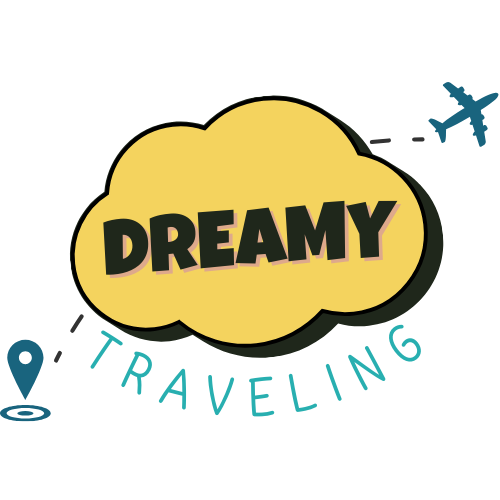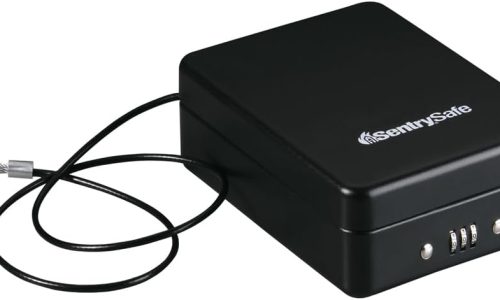How to Stay Safe While Traveling Abroad

There’s this moment I always love when I travel. It’s right after I’ve arrived—usually after a long flight, slightly disoriented, walking into a new place with unfamiliar signs, unfamiliar smells, and unfamiliar sounds. It’s a mix of excitement, disorientation, and awe. And while I’m usually thinking about food or where to drop my bag, there’s always a quiet part of my brain running in the background: Is this a safe situation?
That doesn’t mean I’m walking around scared or constantly suspicious. It just means I’ve learned how to build some basic travel safety into my routine—without letting it kill the mood. I’ve had a passport stolen, I’ve lost a phone to a pickpocket in Prague, and I’ve spent way too long trying to cancel a bank card from a train station in Germany. So… I now try to plan ahead.
If you’re preparing for an international trip and want to feel confident instead of cautious, here’s what I’ve learned over the years—tips I actually use myself. No fear-mongering, just realistic advice.
Do Some Homework Before You Leave
I’m not talking about falling down a Wikipedia rabbit hole (though no judgment if you do). Just a few basic things:
Check travel advisories from your home country
Read up on common scams in your destination
Look into neighborhood safety before booking a place
It also helps to know a little about the local culture. In some places, shorts are totally normal; in others, they’ll make you stand out. In some cities, it’s common to haggle at the market; in others, it’s considered rude. This stuff can help you blend in and avoid drawing unnecessary attention—especially if you’re traveling solo.
Choose Accommodations Carefully
When I book a hotel or Airbnb, I’m usually checking three things:
Is it in a safe area (especially if I might be arriving late)?
Are there solid recent reviews?
Is it easy to get to and from, especially at night?
I’ve learned that saving €20 per night isn’t worth it if I’m uncomfortable walking back after dinner. I’ll often use Google Street View to “walk” the neighborhood ahead of time, just to see what I’m getting into. It sounds a bit over-the-top, but it helps me feel grounded when I actually get there.

Bring the Right Gear: Safe Luggage Makes a Big Difference
There’s a reason why “that one friend who’s been robbed abroad” is basically a universal travel trope. Theft happens, especially in crowded areas like train stations, airports, or popular attractions.
That’s why I started paying more attention to my luggage. These days, I use safe luggage that has anti-theft zippers, lockable compartments, and an integrated lock that’s TSA-approved. One of the best upgrades I ever made was switching to a hardshell carry-on with a built-in locking system and RFID-blocking pockets. It might not be 100% theft-proof, but it makes me feel less like a walking target.
If you’re not sure what to look for, start by checking reviews for the safest luggage for international travel—there are tons of options out there now, from high-end brands to budget-friendly alternatives.
Use a Portable Safe for Valuables (Yes, It’s a Thing)
I used to roll my eyes at this kind of thing, but after one too many hostel mishaps (one involving a missing iPad and another involving a mysteriously disappeared credit card), I finally bought a portable travel safe. And honestly? I love it.
The best portable safes are lightweight, easy to pack, and come with steel cables so you can lock them to a bed frame, a pipe, or even a sun lounger at the beach. I use mine to store my passport, backup cards, emergency cash, and any electronics I’m not carrying with me that day. It takes up barely any space in my suitcase, and it’s saved me more than once.
Here are a few that I recommend:
Be Smart About Money and Documents
Here’s how I usually handle this:
I carry one primary card in my day bag (usually in a zippered, hard-to-access pocket).
I keep a backup card and emergency cash in my hotel room (in my portable safe or locked luggage).
I store digital copies of my passport and travel insurance in a password-protected cloud folder.
I bring one paper copy of my passport, just in case.
If my wallet disappears, I can still function. And if everything disappears? Well, at least I have a plan to recover.
Trust Your Gut and Stay Aware
It took me longer than I care to admit to figure this one out. I used to rationalize weird behavior. “Maybe that guy isn’t following me,” or “Maybe I’m just imagining things.” But no. If your gut says something’s off, trust it.
If you feel uneasy, leave. If someone’s standing a little too close to your bag on the metro, move. If you’re walking alone at night and feel nervous, duck into a shop or cafe. Your intuition is a survival tool—not paranoia.
Also, a small but important habit: I never walk around with both earbuds in when I’m alone, especially at night. It’s such a simple tweak, but it makes a huge difference in how aware I feel.
Think Before You Post
I used to live-post everything: stories, check-ins, airport selfies, the whole deal. But I’ve learned to wait. Broadcasting your location in real-time can create unintended risks—especially if people know you’re away from your hotel or even that your home’s empty.
Now, I post after the fact. Not only does it feel safer, but it also helps me be more present. (And let’s be honest—most people don’t care whether your sunset photo was live or from two hours ago.)
Be Prepared, Not Paranoid
The truth is, 99% of travel is smooth sailing. But it’s that 1%—the misplaced bag, the pickpocket on the tram, the weird feeling that you’re being followed—that can really mess things up if you’re not ready for it.
Travel safety doesn’t have to be complicated. With the right mindset, the right gear (like safe luggage and a portable safe), and a little awareness, you can feel more confident and less stressed—so you can focus on enjoying the reason you traveled in the first place.
If you’ve got a safety tip you swear by—or a story that taught you the hard way—I’d love to hear it. Leave a comment or shoot me a message.



